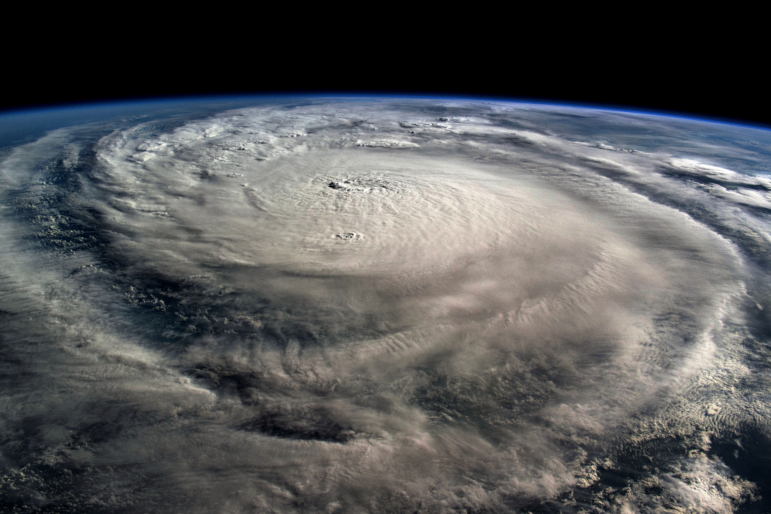MIAMI — One of the deadliest and most costly hurricane seasons ever seen in the Atlantic officially comes to a close on Saturday.
The six-month season brought 18 named storms and 11 hurricanes, five of which made landfall in the U.S. There were hundreds of deaths in the U.S., Central America and the Caribbean.
In the U.S., more than 150 people died from direct causes in the season’s deadliest storm, Hurricane Helene, which tore through Florida and Georgia and brought severe flooding and destruction to North Carolina and in eastern Tennessee.
Before the season began, scientists warned there were likely to be a lot of hurricanes. Record-high ocean temperatures in the Atlantic two to three degrees warmer than normal and other atmospheric conditions set the stage for the above-normal activity.
In late June, Hurricane Beryl formed in the Atlantic and strengthened into a Category 5 storm with 165-mile-per-hour winds. It was the earliest in the season that a Category 5 hurricane had ever formed. It weakened significantly before landfall but caused severe flooding and deaths in the Houston area.
In September, the season’s deadliest storm left a path of destruction from Florida to North Carolina. Hurricane Helene came ashore in Florida’s Big Bend region as a category 4 storm with 140-mile-per-hour winds. It weakened as it moved inland but dropped as much as 30 inches of rain on some parts of western North Carolina. There was severe flooding throughout the region with extensive damage in Asheville and many smaller communities in North Carolina and Tennessee. In North Carolina, as many as 90 people died in Helene’s floodwaters.
Helene’s impact and number of fatalities were the greatest seen in the U.S. since Hurricane Katrina almost two decades ago.
Days before it hit, the Hurricane Center’s forecasts were remarkably accurate. Meteorologists warned there would be catastrophic flooding in western North Carolina days in advance. But, the director of the National Hurricane Center, Michael Brennan says, “It’s difficult when you have an event that’s never been seen before in a community to convey what that impact is going to necessarily look like on the ground. And it’s also challenging because that level of flooding happened over such a large area.”
Helene was one of five major hurricanes this season, two of which reached Category 5. Just two weeks after Helene, Hurricane Milton strengthened to a Category 5 storm, but weakened before making landfall. It came ashore on Florida’s Gulf coast as a Category 3 storm with 120 mile-per-hour winds.
Michael Mann, a climate scientist at the University of Pennsylvania says climate change is making hurricanes more powerful and deadly. He says, “We are headed towards a larger number of extremely intense storms that do far more damage and lead to far greater levels of mortality driven by the warming of the oceans from carbon pollution.”
One factor is the warm sea temperatures that are helping storms strengthen dramatically over the course of several hours, a phenomenon known as rapid intensification. Mann says, “It can be a tropical depression one day and all of a sudden within 24 or 48 hours it’s a major hurricane. And it becomes extremely difficult to plan for.”
In October, Hurricane Oscar went from a small tropical depression to hurricane strength in just five hours. The National Hurricane Center had to scramble to issue warnings to Cuba and other Caribbean islands.
Climate scientist Daniel Gilford says warming ocean temperatures are pushing hurricane intensities up by an average of 18 miles per hour. In a recent study, he analyzed the last several seasons. He says, “Five out of every six hurricanes had this really strong statistically robust signal where human-caused climate change was really clearly increasing the intensity of these storms.” Gilford says because of climate change, hurricanes are now a full category higher than they would have been in earlier decades.
Penn climatologist Michael Mann says that with the laws of physics, “If you have 10% increase in wind speeds from human-caused warming, that will lead to a 33% increase in the destructive potential of these storms.” Fueled by the extra heat from the ocean, storms are also picking up more moisture and then dropping it in heavy rainfall events, such as that seen when Helene hit North Carolina.
Gilford, a researcher with Climate Central says, as hurricanes grow larger, stronger and wetter they’re posing an increased threat to inland areas far from the coast. “Hurricane Helene is especially a lesson that certain places that maybe wouldn’t have been experiencing these intense effects before really are today because of climate change,” he said.
Along with hundreds of deaths, damage from all storms this season is estimated at more than $190 billion. That’s second only to 2017, the year of Hurricanes Harvey, Irma and Maria.

